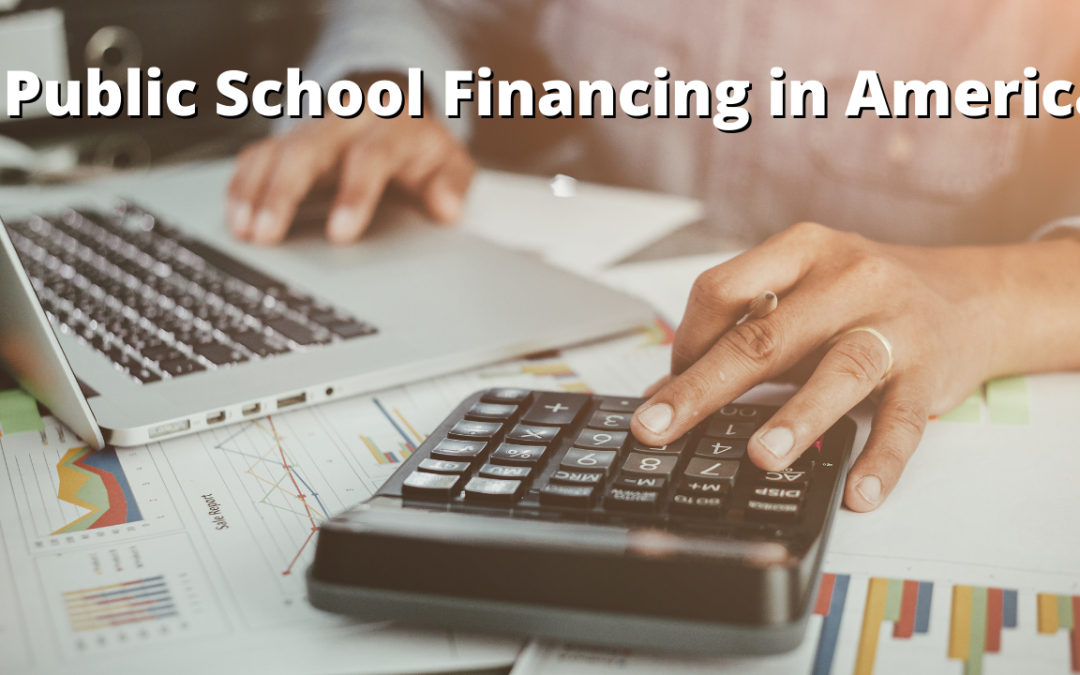Public school financing is the constant focus of media reporting, concerned parents and homeschool support groups. Overall, four states come out at the top end of public-school spending per pupil:
- New York @ $24,040 per pupil/Annual
- District of Columbia @ $22,759 per pupil/Annual
- Connecticut @ $20,635 per pupil/Annual
- New Jersey @ $20,021 per pupil/Annual
- Vermont @ $19,340 per pupil/Annual.
The five states spending the lowest amount per pupil include:
- Utah @ $7,628 per pupil/Annual
- Idaho @ $7,771 per pupil/Annual
- Arizona @ $8,239 per pupil/Annual
- Oklahoma @ $8,239 per pupil/Annual
- Mississippi @ $8,935 per pupil/Annual.
WHERE DOES THE MONEY COME FROM?
According to the website Research.com, “Public education in the U.S. is largely financed by state (46.8%) and local (45.3%) sources, while the remaining 7.8% is contributed by federal sources.” (SOURCE: U.S. Public Education Spending Statistics for 2022 | Research.com)
The National Center for Education Resources (NCER) reports similar numbers that show that, on the average, 46.8% of public-school funding comes from state sources, 45.4% from local sources and just 7.8% is provided by the federal government.
So how “thin” is that 7.8% provided by federal sources spread? Comparatively small percentages of pupil support come from:
- IDEA (Individuals with Disabilities Education Act – provides dollars for free education of students with disabilities, ages 3 – 21.
- Child Nutrition – National School Lunch Act, School Breakfast Program, Special Milk Program, etc.
- Bilingual Education Act – Funding for the needs of limited English-speaking ability (LESA) students.
- Indian Education – Provides funding for Native American education needs.
- ESEA (also known as the Elementary and Secondary Education Act) – Gives financial assistance to schools, agencies, and organizations whose enrollment includes a high percentage of pupils from low-income families.
- Safe and drug-free schools – Distributed under what is also known as Title IV of ESEA
- Impact Aid Program – includes dollars allocated for federal property payments, basic support payments, children with disabilities payments and construction grants.
Just two federal sources of public education funding focus more generally on core education or vocational/technical education funding.
- Math, Science, and Professional Development – “grants received under Title II, Parts A and B of the Elementary-Secondary Education Act (ESEA) as reauthorized by Every Student Succeeds Act (ESSA)” (NCES, 2019).”
- Vocational and Technical Schools – This funding category includes “grants authorized by the Carl D. Perkins Career and Technical Improvement Act, as well as other grants directly related to vocational education” (NCES, 2019).
A final small percentage of federal support for public education falls into the “Other” or “Unclassified” category. This amount includes “revenues from 21st Century Community Learning Center programs, federal grants for adult education, and other federal revenues through the state. Also includes federal revenues received through the state that were unreported within any of the program-specific categories in this table” (National Center for Education Statistics/NCES, 2019).
Funding sources specific to individual states include dollars for
- special education programs,
- funds for “at risk” and other economically disadvantaged children,
- bilingual education,
- gifted and talented programs, vocational education, and
- staff improvement, school lunch programs, debt service, transportation, etc.
Local funding is somewhat dependent on state programming but generally includes:
- property taxes/”parent” government contributions – determined by “independence of dependence of the local school system” (NCES, 2019)
- private dollars – tuition fees, transportation fees, textbook sales, school lunch revenues, student fees and private contributions
- other sources – rents, royalties, sales, services, earnings from interest-bearing accounts and “other local revenues.” (NCES, 2019)
SUMMARY
Not all school systems spend (distribute) their income in the same way. In 22 states, 50% of education revenue comes from state sources. In sixteen states, 50% or more of the education revenue came from specifically local sources. Federal education funding is by far the smallest contributor, across-the-board.
To find out how your state measures up in terms of per-pupil education spending, visit:
